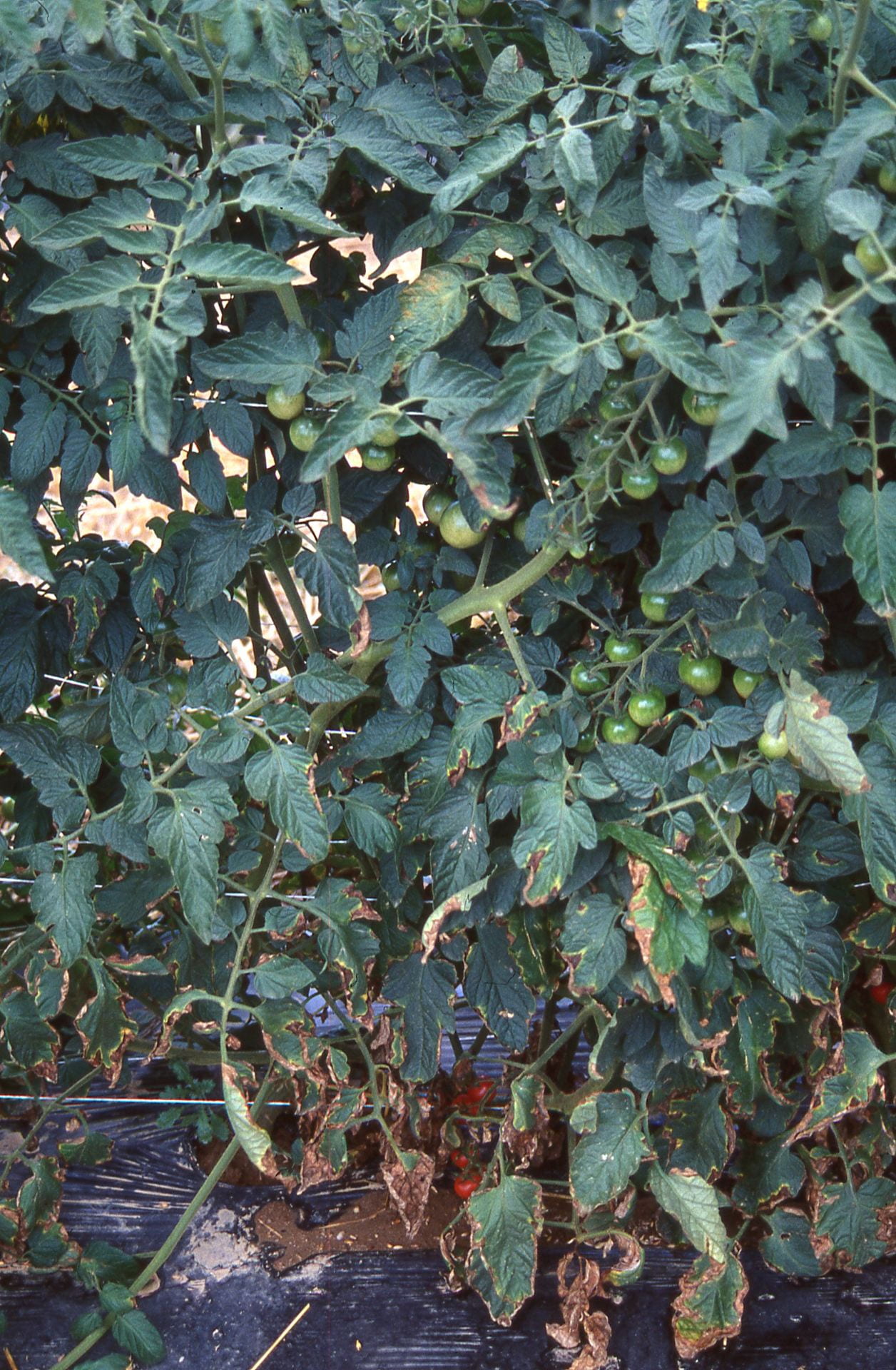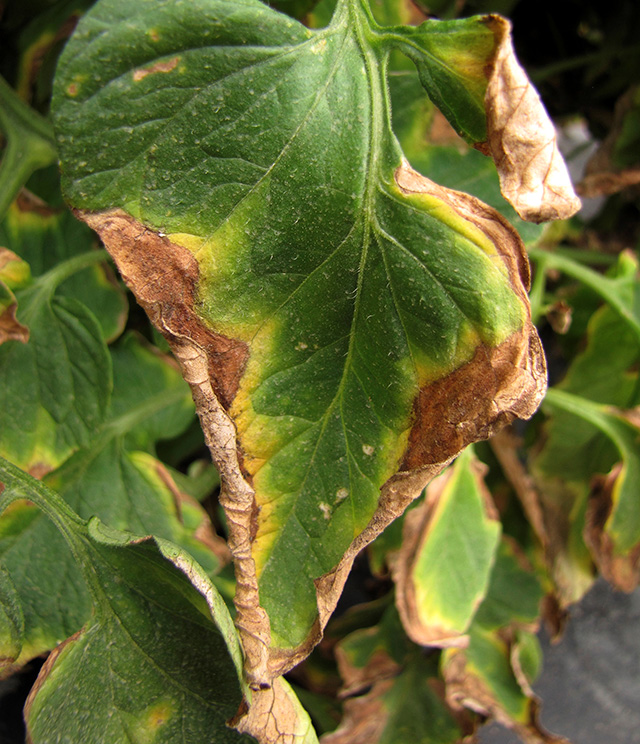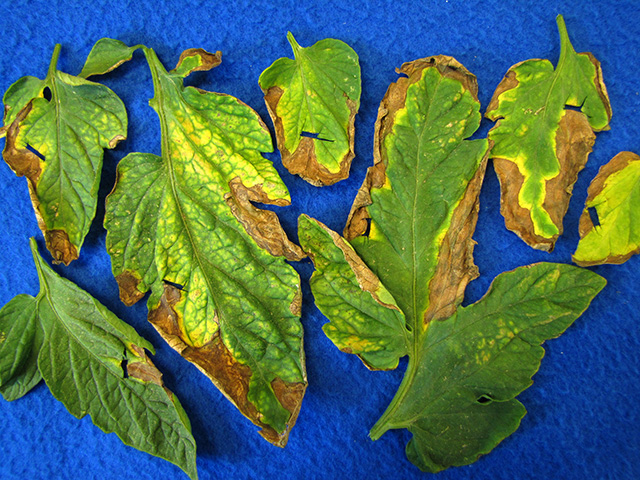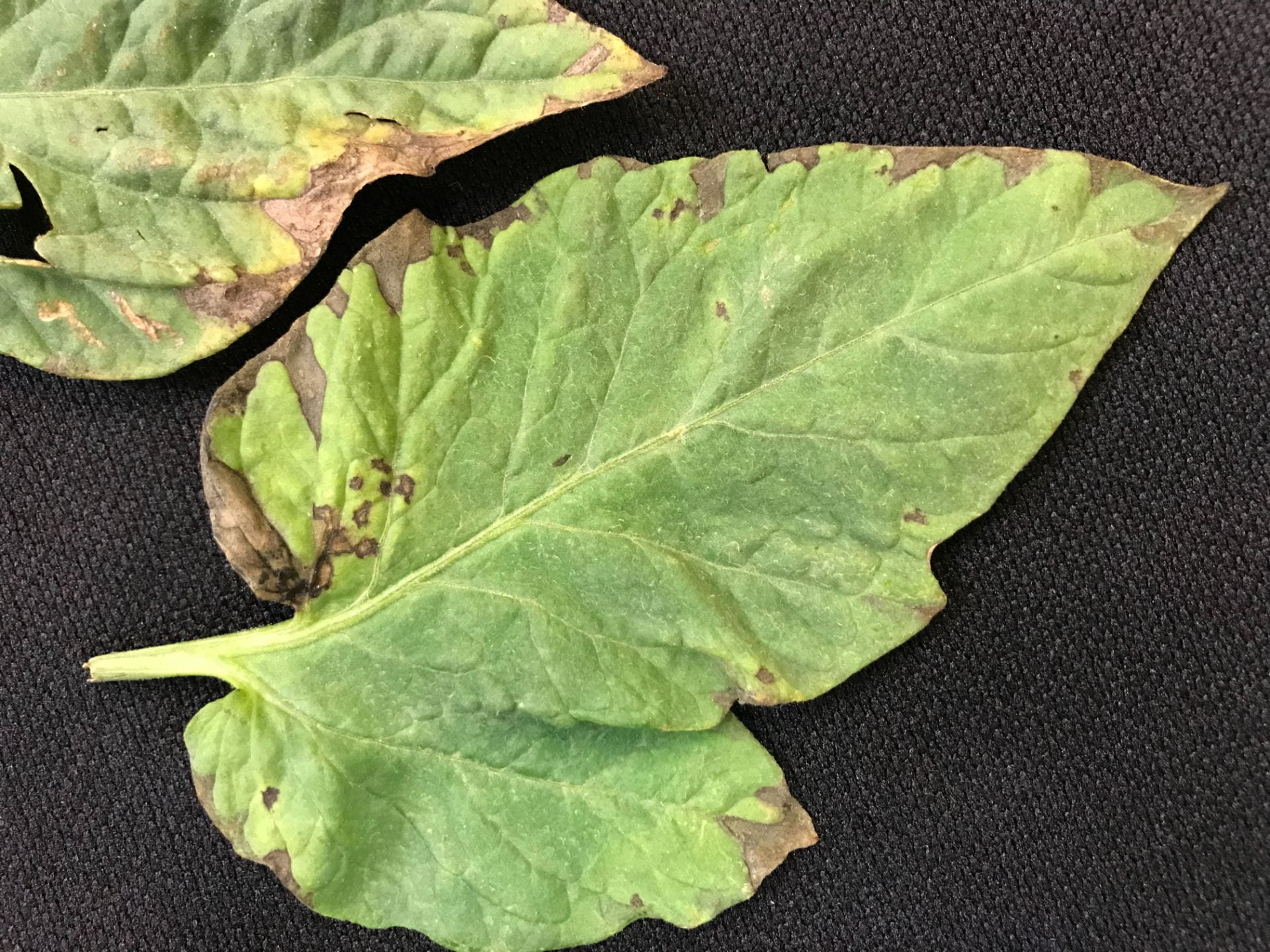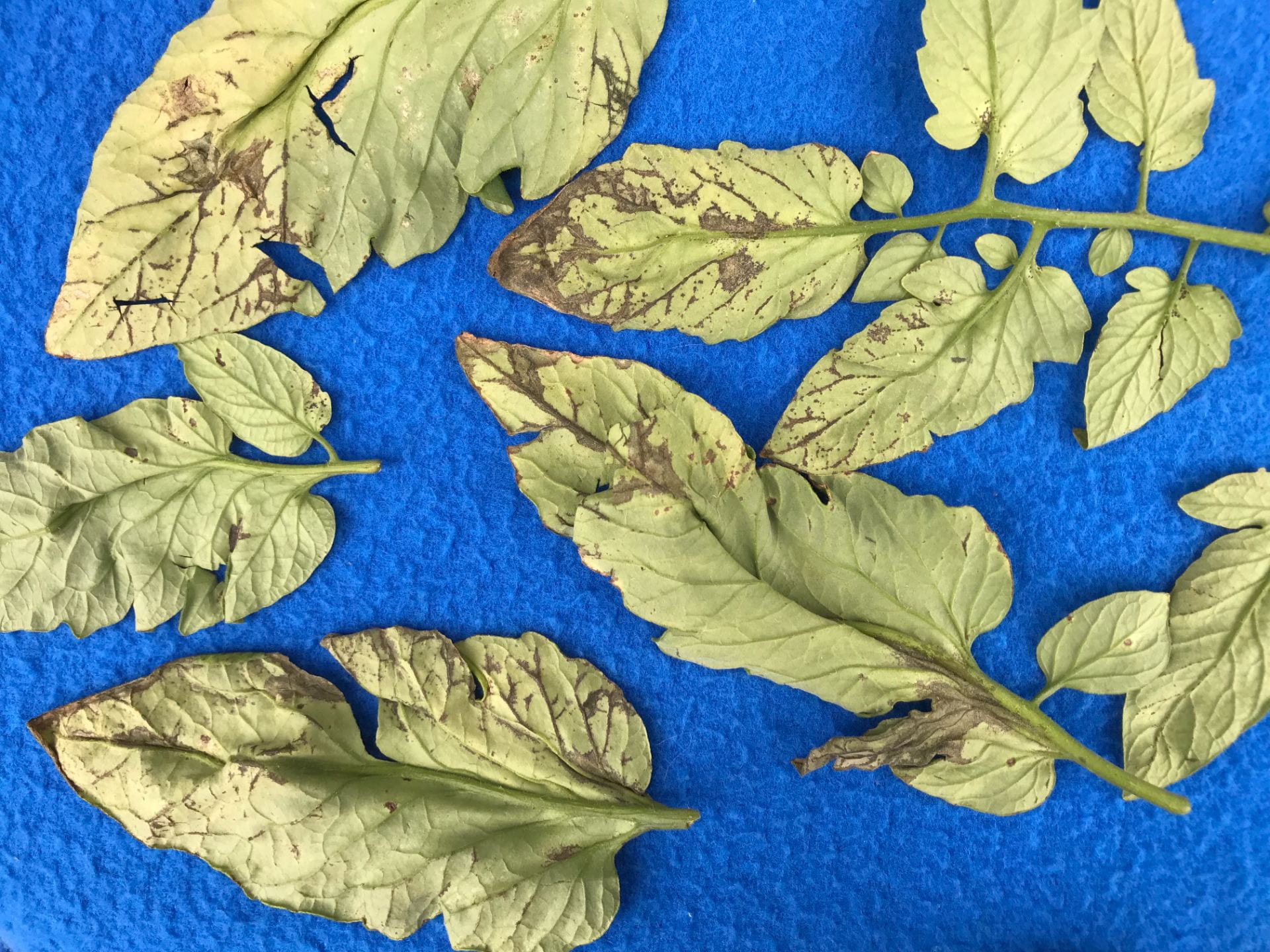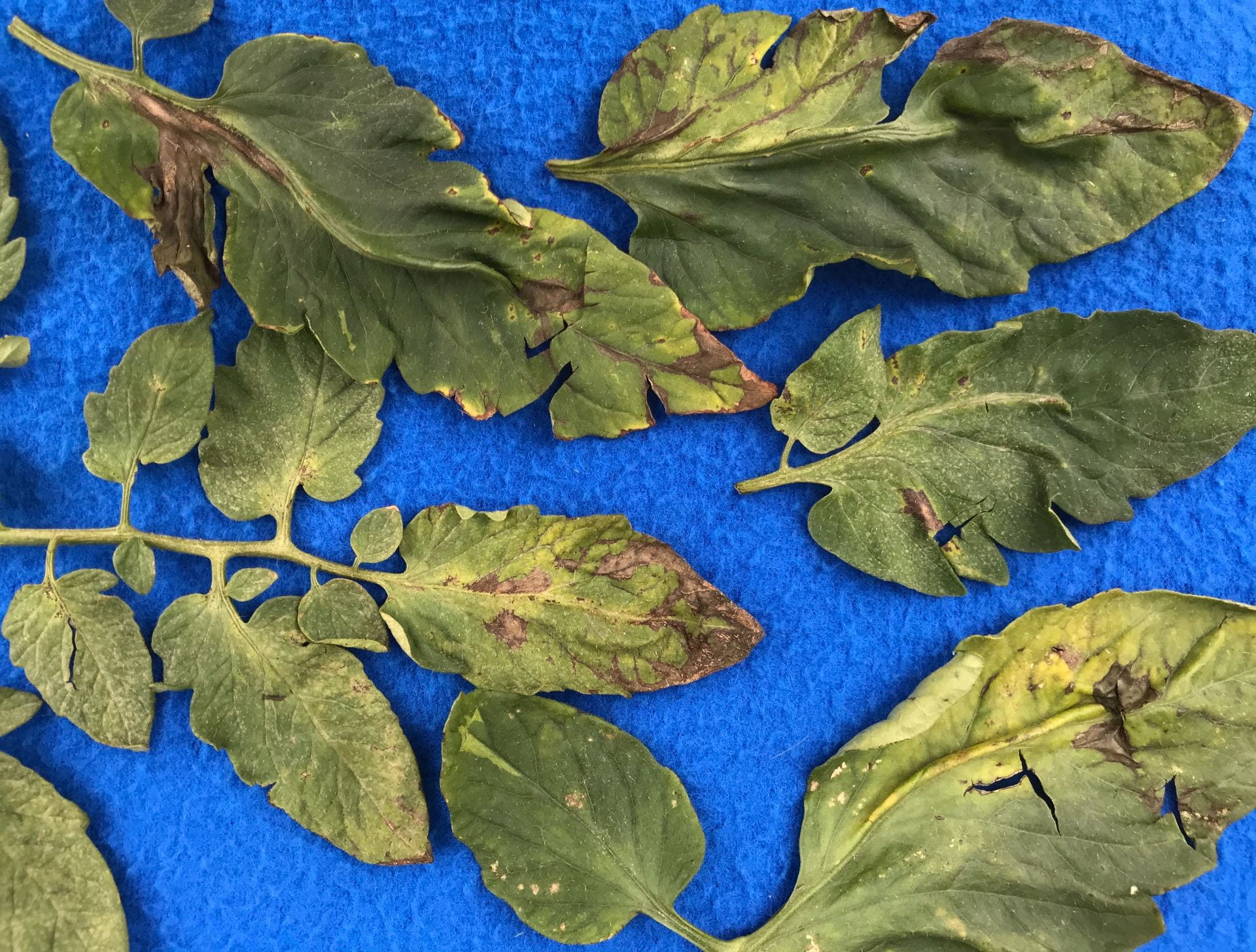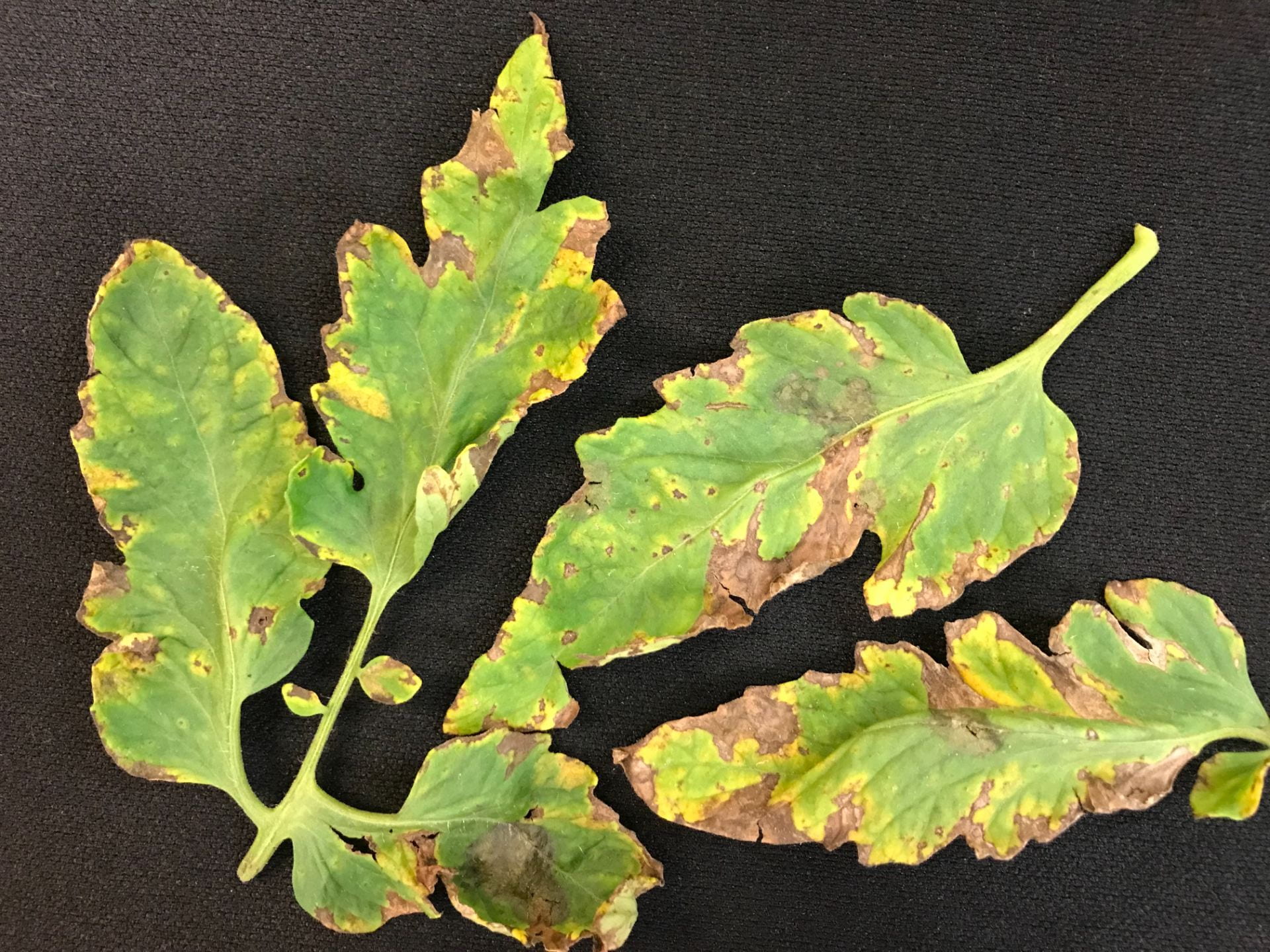Canker is the most destructive of the bacterial diseases affecting tomato with greater potential to kill plants than bacterial speck or spot. Fortunately there has been very limited occurrence on Long Island in recent years. It has been seen occasionally in some commercial production fields, often on farms where seen before, and a garden.
Typical leaf symptoms are brown tissue along the margin with a yellow border (marginal burning) and occasional v-shaped pattern to affected tissue. Curling of leaves and wilting occurs as the disease progresses because the bacteria clog up veins. Sometimes there is no yellow border, which may reflect variety or environmental conditions (see last photographs below). Small light brown spots develop on fruit that are often raised and may have a white border.
Initial sources of the pathogen for a farm or garden include contaminated seed and infected seedlings produced in a greenhouse where the pathogen survived from a previous outbreak. The pathogen could be moved in water droplets dispersed by wind during a rainstorm between nearby plantings.
Once in a planting, bacteria can be moved on workers’ hands and equipment that touches plants, especially when this results in plant damage. Pruning and trellising are activities that can result in pathogen spread. Workers should routinely clean hands and equipment, and work in areas with suspect symptoms last. Also, when leaves are wet do not work in fields and do not apply pesticides. Bacteria can be in water on leaves, and get moved with the water.
The pathogen can survive in crop debris about 2-3 years, as well as on stakes used to trellis tomatoes and planting materials.
Bacterial diseases are difficult to suppress with fungicides, especially when applications are started after symptoms are already present. Copper has been the primary fungicide for managing bacterial diseases, but few products have tomato bacterial canker specified on the label. Several biopesticides are also labeled for bacterial speck and spot but not canker (see link to table below). Canker is more difficult to manage because the causal bacterium can move systemically in plants. Do not use an air-blast sprayer when a bacterial disease is present as these pathogens can be easily moved in the spray as it is driven through the plant canopy to adjacent rows.
For labeled products see table of Biopesticides and Conventional Fungicides for Managing Bacterial Diseases in Tomato.
Removing affected plants can be warranted when symptoms become severe early in confined areas to try to minimize spread. Determining the source of an outbreak is valuable to help minimize the chance of future occurrence.
Bacteria in veins ooze out when the veins are cut. This can be seen through a microscope by placing a piece of leaf tissue in water on a microscope slide. Bacterial streaming was seen from the leaf pieces removed from the leaves in the following photographs. Observing bacterial streaming is diagnostic for canker distinguishing it from drought stress.

Sometimes there is no yellow border with early symptoms. Photographs below were taken in mid-June 2014. Bacterial streaming was seen.
Photograph below taken in mid-July 2021. Copious amount of bacteria were seen coming out of leaf pieces under a microscope as is typical with this disease.
A less common symptom is black veins visible on the underside of leaves. The following two images are the upper and lower surfaces of the same leaflets. Lots of bacteria streamed from symptomatic tissue including the black veins.
The following photographs were taken in a home garden. Symptoms on the first plant affected (Black Cherry) looked more like drought stress due to the lack of yellow border. This characteristic feature of foliar canker symptoms developed on other varieties that became infected subsequently. Both plants photographed were confirmed to have canker by looking for bacterial streaming from leaf pieces cut from the edges of symptomatic tissue and by isolating the bacterium and then using molecular detection techniques for identification.
Following image is drought stress. No bacterial streaming was seen from leaf pieces.
Please Note: The specific directions on pesticide labels must be adhered to — they supersede these recommendations, if there is a conflict. Any reference to commercial products, trade or brand names is for information only; no endorsement is intended. For up-to-date information on labeled fungicides see Cornell Integrated Crop and Pest Management Guidelines for Commercial Vegetable Production



